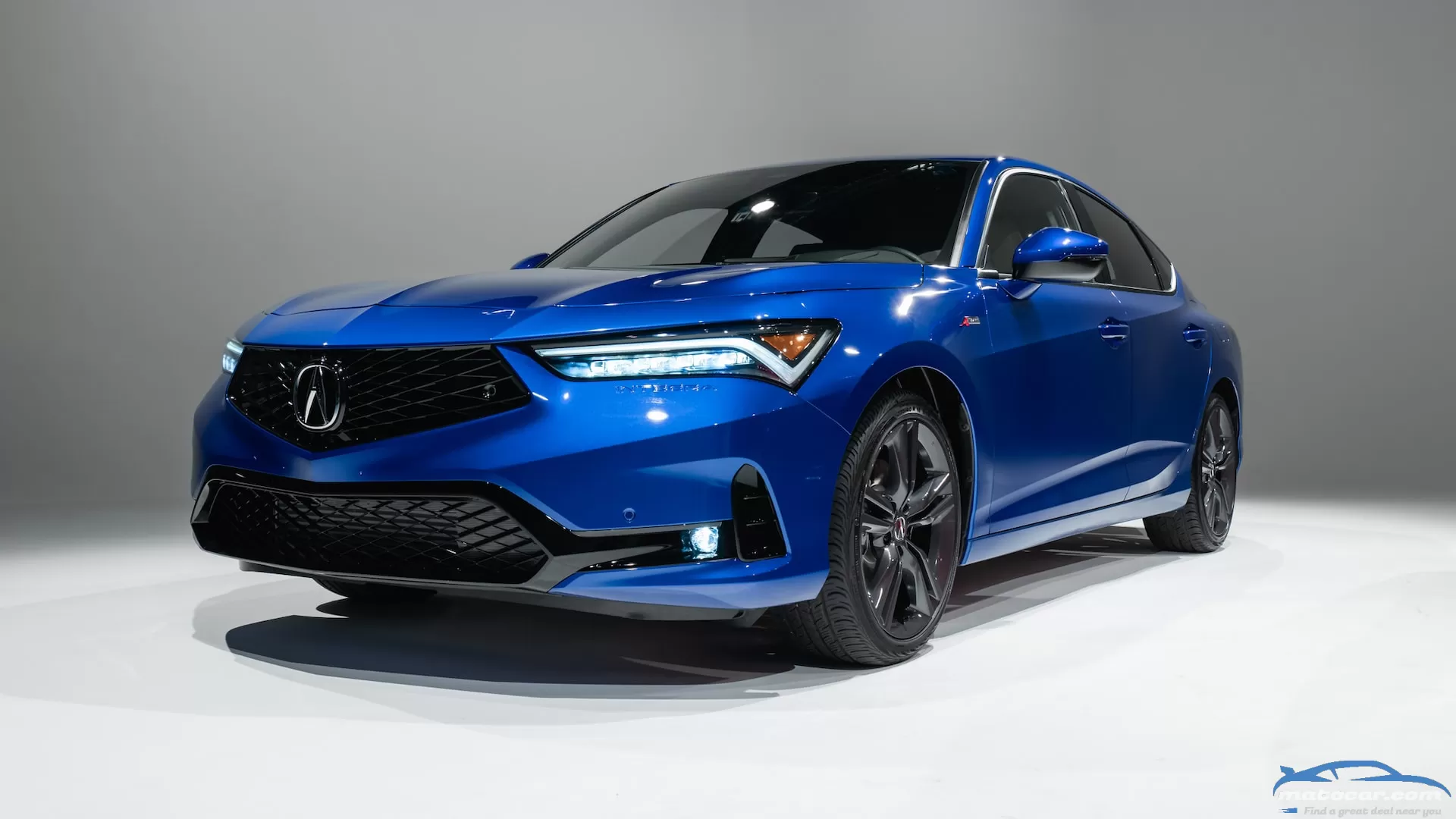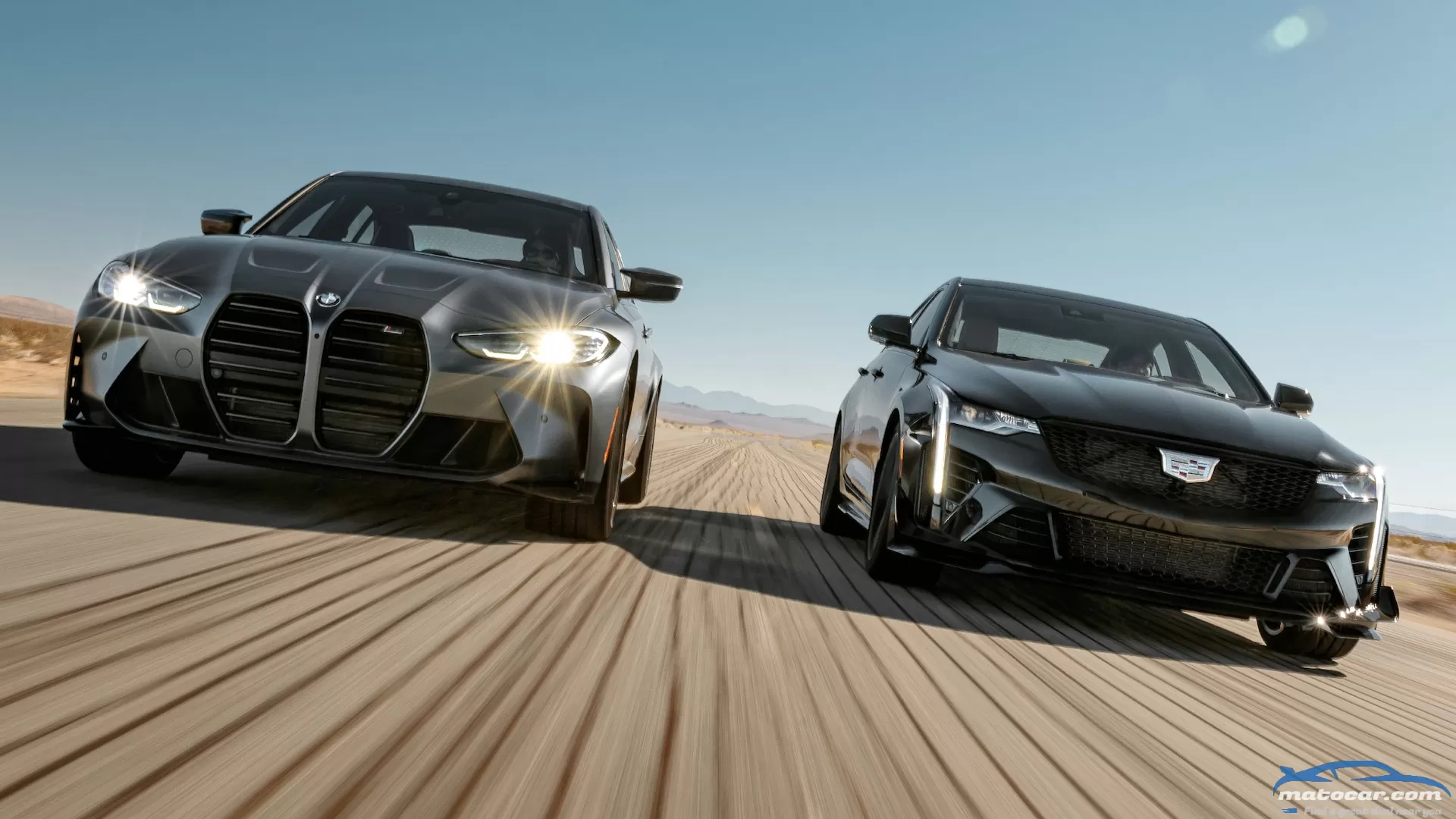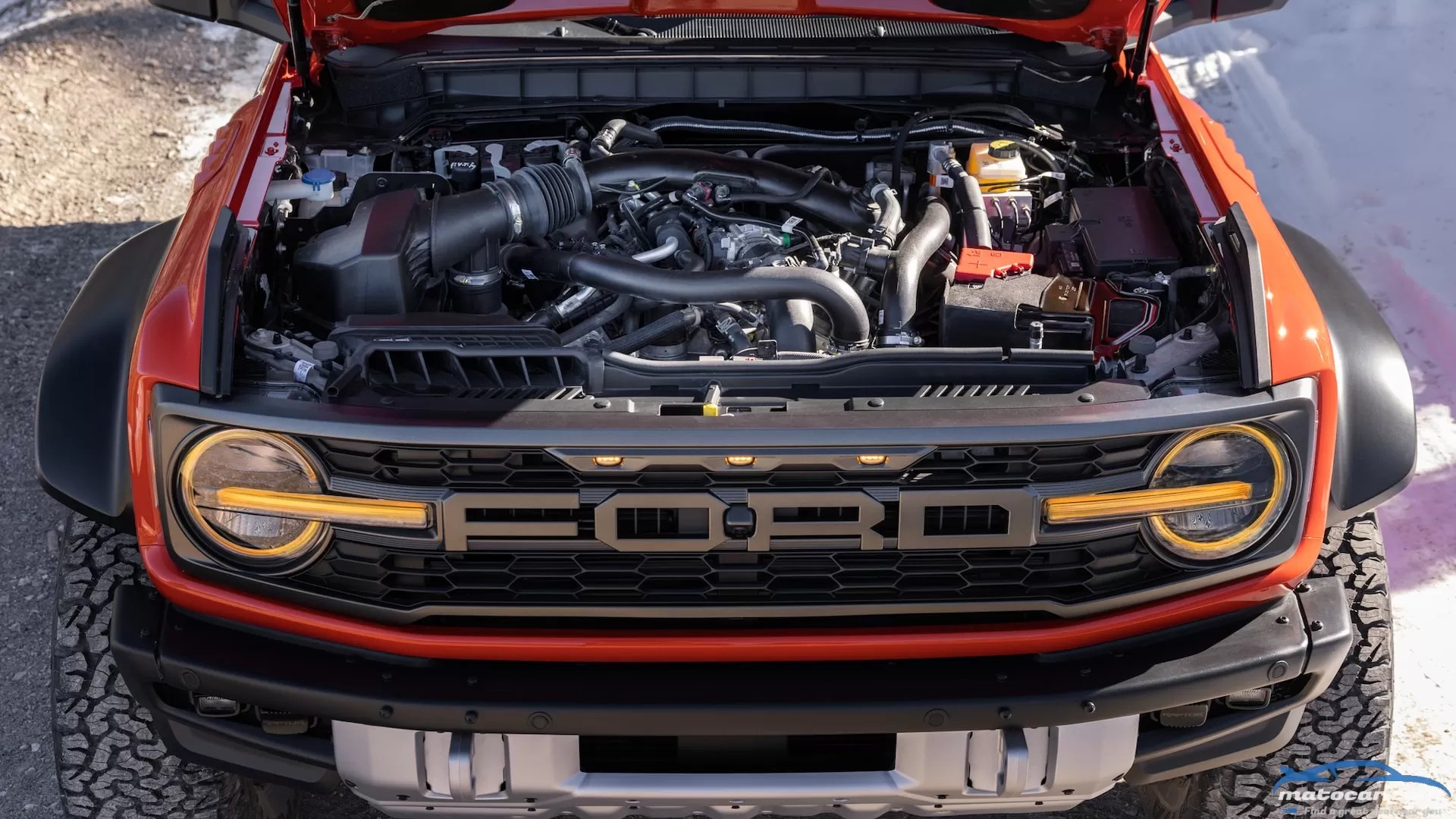2023 Acura Integra First Look: Civic, Elevated

When Acura showed the Integra Prototype in November of last year, the reaction was overwhelming. Some applauded the iconic sport compact's return, while others gave its style thumbs down. To the surprise of no one, based on Honda/Acura's history of presenting near-production-ready vehicles as "concepts" or "prototypes" before debuting their final renditions, the 2023 Acura Integra looks just like last year's prototype. The only things missing are the prototype's graphics package, yellow paint, and the cool-looking dual exhausts also painted in yellow. Its swoopy roofline, liftback tailgate and classic five-door shape pay homage to the original Integra hatchbacks from the '80s, while its new powertrain and chassis are lifted straight from the latest Honda Civic.
The 2023 Acura Integra takes over from the outgoing ILX as the gateway to the brand. And it's a smart strategy. While some Integra enthusiasts may be disappointed with the new car's design, others will see it as an opportunity to get a spirited, entry-level car without spending a fortune—or even just a more luxurious Civic with a sportier bent. The Integra will launch in three trims—Integra, A-Spec and A-Spec with the Technology Package—in the first half of this year, with a price tag starting around $30,000—pretty much where today's regular-grade Civic hatchback tops out.
The Design Is Loaded With References to Early Integras
Penned by Acura's studio in Japan, the new Integra carries Acura's design language first seen on the 2019 MDX. Despite sharing its platform and overall shape with the 2022 Civic hatchback, the Honda and Acura don't share any sheetmetal. In fact, the Integra is a massive 6.8 inches longer, 1.1 inches wider, and 0.2 inch lower than the Civic Hatchback, though both cars share the same 107.7-inch wheelbase.
The Integra marks the first use of Acura's pentagonal grille without a frame, a feature we saw on the prototype that adds a touch of sharpness to the front end. Like other Acuras, the grille is flanked by kinked LED daytime running lights and jewel eye headlights. From the profile, the most attractive part is the C-pillar, where the roofline sharply drops down to give the Integra A a classic liftback design. The rear's soft character lines blend in nicely with the rest of the car, while its ducktail spoiler and dual exhaust lean hard into the sporty presence that Acura is hoping its Integra gives off.
Like early Integra models, the Integra name is embossed in the front and rear bumpers under the driver-side headlight and passenger-side taillight, a cue that we saw on the prototype and was (thankfully) kept on the production model.
A Roomy, Luxurious Space Inside
Though the Integra's exterior design was previewed by the prototype, this is the first time we've truly seen the cabin. (We nabbed a brief look at a working prototype's interior recently, though it was mostly covered up at the time.) There's no masking the Honda Civic ties, but Acura took some of the best traits from the (admittedly excellent, surprisingly upmarket) Civic's interior and built on top of it, ladling on extra luxuries and some unique touches. Among the surprises? That the cabin design takes a departure from Acura's other current models by ditching those cars' big, bold rotary knob in the center console for selecting drive modes. The Civic's slim toggle switch on the console for handling the same task remains.
Besides the soft leather and suede inserts on the seats, the one thing that will impress Integra drivers is the standard 10.2-inch digital dashboard display. Dubbed Acura Precision Cockpit, the screen takes place right in front of the driver, offering modern graphics and multiple display modes that make the instrument cluster unique (a similar feature is only available on top-spec Civics). A 7.0-inch central touchscreen is standard, though top trims get a 9.0-inch touchscreen. The smaller display comes with wired Apple CarPlay and Android Auto, while the bigger screen adds wireless connection with Amazon Alexa integrated. Those who select the A Spec with the Tech Package will also get a head-up display and four USB ports instead of one.
We've praised the Civic's interior for its cool full-width air vent design, and Acura kept parts of it in the Integra. Although the vents don't run along the entire dashboard like in the Honda, its diamond pattern design is unique, and its functionality is the same.
As far as equipment goes, the 16-speaker ELS Studio premium audio system is standard on the top trim, while an eight-way power-adjustable driver's seat is standard on the base model. Those who get the base or A-Spec trims will get synthetic leather seats and a manual-operated passenger's seat.
Thanks to the hatch body style and longer-than-Civic dimensions, the Integra is quite roomy. The rear seats fold completely flat, leaving a ton of space for large items like a surfboard, or even allowing short people to sleep in it. The drawback to that sultry roofline is headroom for the rear seat occupants is tighter, meaning tall passengers will feel the headliner touching the top of their heads.
Body By Acura, Powertrain By Honda
The 2023 Acura Integra will be powered by a 1.5-liter turbo-four engine sending 200 hp and 192 lb-ft of torque to the front wheels. A CVT transmission is standard, though a six-speed manual with a limited slip differential is available. That comes with a bit of a catch, as the manual is only available in the top trim, but it will be offered at no cost. Automatic versions will get paddle shifters. If these setups sound familiar, it's because they're lifted from the Civic; however, the turbo engine is the version from the sportier Civic Si—as is the six-speed manual transmission—while the CVT is borrowed from the lower-output 1.5-liter turbo engine offered in the regular Civic EX and Touring models. Honda doesn't offer the Si with any automatic, making the Integra's entry-level setup (200-hp turbo and CVT) unique. Ditto the combination of Si power in a hatchback body; the Civic Si is only offered as a sedan.
For enthusiasts, the A-Spec with the Technology Package will be the trim to get solely due to the availability of the six-speed and adaptive suspension (besides, of course, its attractive equipment). A-Spec models also get the optional 18-inch wheels (compared to 17s in the base model), though there will be 19-inch wheels available as dealer-installed options.
Four drive modes are available—Comfort, Normal, Sport and Individual. The latter allows the driver to change the suspension, steering and transmission settings individually.
So, How Much?
Acura says the Integra will start around $30,000 and will max out in the mid-$30,000s. And from what we've seen in person, Integra will bring great value to shoppers. It will be a good alternative to those considering a Mercedes-Benz CLA, BMW 2 Series or Audi A3, and it might even steal some buyers from the Civic hatchback, which maxes out at $30,865. While some might bemoan the overall, well, Civic nature of the Integra, know this: The latest Civic is a premium-feeling, slick-driving compact. A version with power in line with the sportier Civic Si that also combines a ton of extra luxuries and even more upmarket styling with a practical hatchback body sounds pretty appealing, especially given it won't cost much more than the Honda.
Reservations for Integra are now being taken, and the first 500 buyers will have a chance to get a limited-edition NFT. We look forward to driving Integra in May of this year, with the vehicle arriving to U.S. dealerships soon after that.
You may also like
It's time to present the finalists for the inaugural MotorTrend Performance Vehicle of the Year. Yes, after running through our contenders—those rides that missed the cut for the final round of voting the PVOTY honors, we're introducing those that did make the finalist cut. One of these vehicles earned our Golden Calipers, having excelled in all six of our criteria (safety, value, advancement in design, engineering excellence, efficiency, and performance of intended function). The weighting of some of those criteria may differ slightly from our Car, Truck, and SUV of the Year competitions—after all, when outright performance is our focus, efficiency is perhaps graded on a curve—but every single one is considered when choosing our winner.Read on to meet the first four members of our finalist field—the rest will be unveiled tomorrow—to represent the cars that made it out of our initial round of voting following evaluations at Hyundai's Proving Ground outside of Los Angeles. The finalists then went on to road drives on Angeles Crest Highway and, later, grueling track tests at Willow Springs Raceway. Come back on Monday, February 14 to see which one emerged with the title!
We've all known a Ford Bronco Raptor was coming, but nobody in the public Broncosphere has known for sure how Ford Performance planned to endow the Bronco with F-150 Raptor-worthy performance—would it do so using an EcoBoost V-6 (and if so, which one?) or a Coyote V-8? Well, now we know: The Ford Performance gang has worked its magic on the 3.0-liter EcoBoost twin-turbo V-6 from the Explorer ST, modifying it extensively to suit the Bronco Raptor's mission, which is to "reward the revs." (For more on the V-6/V-8 decision, head here.)That means the engine should produce meaningful power all the way out to the far reaches of the tachometer while the standard 10-speed automatic transmission's gearing ensures that power is easy to explore the top of the tach. Here's what it took to turn a family SUV motor into a desert stormer for a hardcore 4x4, plus the modifications needed to get that power safely routed to the ground.What's Under the Bronco Raptor's Hood?You'll recall that the 3.0-liter EcoBoost is basically a bored and stroked EcoBoost Nano family sibling of the compacted-graphite-iron-block 2.7-liter powering other Broncos, so it bolts in with relative ease. Relative to the Explorer application, this Bronco Raptor 3.0 features unique cylinder heads that eliminate the exhaust-gas recirculation and emphasize maximum air flow into and out of the engine.A giant high-flow intake airbox and filter drop air straight down into the turbos on each side, helping to reduce the overall restriction on the low-pressure side by 50 percent. The turbos themselves are new for the Raptor, and the plumbing to, from, and through the intercooler is improved to lower restriction. The combustion chambers flow more air, then aft of the turbos there is a full true dual exhaust system with 2.7-inch pipes and a new-to-Bronco four-position active-valve (Quiet, Normal, Sport, and Baja) that reportedly helps deliver a total drop in backpressure of 20 percent.The combined effect of all these mods is greater "boost durability," which means the boost sustains to enhance high-end power and prevents that feeling of power falling off a cliff as you near the engine redline. The new Baja drive mode also activates an anti-lag turbo calibration that further maximizes performance during high-speed desert running. As of press time, the team is still six weeks or so from finalizing the engine's state of tune and certifying it with the EPA, but we're assured it will make north of 400 horsepower. Considering this engine makes 400 hp at 5,500 rpm and 415 lb-ft at 3,500 rpm in the Explorer ST, we'd expect a healthy increase in peak power, probably at a higher rpm, with peak torque rising less but remaining available over a wider plateau.Driveline ModsIt takes a lot more torque to get a big 37-inch tire spinning than it does a 30-inch 255/70R16 or even a 35-inch 315/70R17 Sasquatch tire—especially if one tire ends up pulling the entire vehicle, due to locked axles and slippery conditions under the other three tires. Then there's the driveline shock that comes when a big, spinning tire suddenly finds traction and stops or slows upon landing from, say, a jump. To cope with these magnified driveline forces, both front halfshafts and both ends of the stronger front drive shaft get beefy constant-velocity joints—no simple universal joints here. The outer hubs and bearings are also strengthened.Following the torque aft, the rear drive shaft is also beefed up and it feeds a stronger new Dana 50 Heavy-Duty AdvanTEKrear axle (up from a Dana 44) made of thicker (9-mm) steel tubes capped at each end by a unique forging that helps widen the track. The differential is fitted with a bigger, stronger 235 ring gear (up from 220) and pinion, retaining the Sasquatch model's 4.70:1 axle ratio. Ford Performance developed both these axles and fits them to the Bronco DR race truck. They increase the track width by 8.2 inches front, 6.7 inches rear, relative to the Sasquatch package.Upstream of all this, the transfer case gets a stronger clutch for 4A automatic on-demand engagement, but it carries over the 3.06:1 low-range ratio and overall 67.8:1 crawl ratio. The standard 10-speed automatic is unchanged but for a revised torque converter and the addition of a second transmission oil cooler.Fearless Bronco Raptor 0-60 Time PredictionFord doesn't estimate acceleration times, but it says the base Bronco Raptor's curb weight should come in just under 5,750 pounds. If we conservatively estimate engine output at 430 horsepower, that gives a weight-to-power ratio of 13.4 pounds/horsepower. That's almost exactly what we measured on the last Ford F-150 Raptor 37 pickup we tested (13.3 lb/hp), and that full-size truck took 5.6 seconds to hit 60 mph on the same tires, with virtually the same transmission and a slightly taller axle ratio. So we're guessing the smaller truck will improve on that just slightly and lay down a 5.5-second 0-60 time, shaving at least a second off the quickest Bronco time we've measured.
Volkswagen just filed a patent application for an intriguing pickup-truck version of its upcoming ID Buzz electric van, and we're desperate to learn more. An image filed with the patent (above) depicts a four-door, crew-cab ID Buzz trucklet—essentially a 2024 Volkswagen ID Buzz van with its aft roof section removed and its rear sliding doors replaced with what appear to be conventionally hinged pieces. It immediately brings to mind the classic "Doka" versions of the vintage VW vans—short for doppelkabine.The patent image is unusual in that it's rendered in full color, and not in the typical axonometric, line-drawing style. Given the ID Buzz already is patented, we figure this is enough for VW to secure this kind of design, at least as a spin-off model.It also gives us an idea of what to expect should this truck become a reality. The cargo bed is quite deep and has seemingly thin walls to maximize its utility, while there is what looks to be a black-plastic-lined foot step just ahead of the rear wheel. Seeing as how the roof sports a ribbed section with the same kind of plastic treatment as the bed liner, we figure it's designed for carrying loads; that foot step therefore would come in handy for loading things atop the ID Buzz, too. We can even faintly make out a round Lidar unit similar to the pop-up pieces VW has been previewing on its semi-autonomous setups of the future; it's located on the front right corner of the roof, by the windshield pillar. There likely is a matching unit on the left side.Some of this ID trucklet's styling cues indicate it might be a concept car, however. The forward door cut line is slightly different from that on the production ID Buzz van; the tires are very low-profile and sport an unusual tread pattern; and instead of big glass side mirrors, there appear to be pop-out cameras. There also is a long LED strip running from the nose to the tail along the body line separating the green lower section from the silvery top.You've also probably noticed that this pickup is less "truck" and more, uh, van. The green vehicle shown here has absolutely zero off-road pretense, and doesn't even wear extra body cladding on its bumpers. It is a street-first type of truck, and that's okay—in fact, it's downright different; these days, most trucks sit relatively high off the ground and wear I'm-tougher-than-you styling. This ID Buzz pickup is a van with a buzz cut, and we're here for it (in fact, we even rendered just such a vehicle soon after the ID Buzz debuted!). We'll know more about this intriguing design if or when it appears in the metal; were it to go into production, don't expect an on-sale date before 2024, after the ID Buzz van hits the market here.



-look-like.webp)
0 Comments